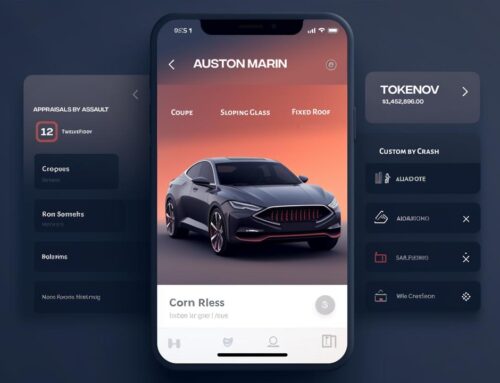How to Build High-Quality Backlinks from Reputable, Authoritative Websites Relevant to Your Niche and Content
Building high-quality backlinks from reputable, authoritative websites is an essential aspect of search engine optimization (SEO) and a significant factor in improving your website’s visibility and rankings on search engine result pages (SERPs). In this article, we will explore in-depth strategies for creating high-quality backlinks that will help drive organic traffic to your website and ultimately grow your online presence.
1. Create Valuable, Share-Worthy Content
First and foremost, the foundation of any successful backlink strategy is creating valuable, share-worthy content that other websites and their audiences will find informative, useful, or entertaining.
1.1. Identify Your Target Audience
- Understand your target audience’s needs, preferences, and pain points
- Conduct market research
- Analyze competitors’ content
- Use social media and online communities to gather insights
- Develop content that resonates with your target audience and addresses their needs or concerns
1.2. Produce High-Quality Content
- Focus on creating well-researched, in-depth content
- Write long-form articles, guides, or case studies
- Use visuals, like infographics, to supplement your content
- Ensure your content is unique, engaging, and actionable
- Maintain a consistent publishing schedule to establish credibility and trust
2. Perform Competitor Analysis
Understanding your competitors’ backlink profiles can offer valuable insights into potential link-building opportunities.
2.1. Identify Competitors
- Compile a list of your primary competitors
- Include both direct competitors and niche-specific websites
- Look for competitors who rank well for your target keywords
2.2. Analyze Competitor Backlinks
- Use tools like Ahrefs, SEMrush, or Moz to analyze competitor backlink profiles
- Identify high-authority websites linking to your competitors
- Analyze the types of content attracting backlinks (e.g., blog posts, infographics, videos)
- Look for patterns and opportunities to replicate their success
- Reverse-engineer their strategies for obtaining backlinks
- Discover untapped backlink sources within your niche
3. Leverage Guest Blogging Opportunities
Guest blogging is an effective way to earn high-quality backlinks and gain exposure to a broader audience.
3.1. Identify Guest Blogging Opportunities
- Look for reputable, authoritative websites within your niche that accept guest posts
- Use Google search operators (e.g., “your niche” + “write for us”)
- Check popular guest blogging platforms, like MyBlogGuest or Guestpost.com
- Utilize your network to find opportunities through personal connections
- Review the target website’s guidelines for guest bloggers to ensure a good fit
3.2. Create Compelling Guest Content
- Develop unique, high-quality content tailored to the target website’s audience and guidelines
- Align your content with the website’s existing content themes and topics
- Provide actionable tips, insights, or solutions that will benefit their audience
- Include a relevant, natural link to your website within the content or author bio
4. Utilize Skyscraper Technique
The Skyscraper Technique is a content-driven link-building strategy that involves creating exceptional content and reaching out to relevant websites for backlinks.
4.1. Research High-Performing Content
- Identify popular, high-performing content within your niche
- Use tools like BuzzSumo or Ahrefs to find content with a high number of backlinks or social shares
- Analyze the top results in SERPs for your target keywords
4.2. Create Superior Content
- Improve upon the existing content
- Make your content more comprehensive, up-to-date, or visually appealing
- Address any gaps or shortcomings in the original content
- Ensure your content provides significant value and stands out from the competition
4.3. Reach Out for Backlinks
- Compile a list of websites that have linked to the original high-performing content
- Craft personalized outreach emails to these websites
- Introduce your improved content and explain its value
- Politely request a backlink or mention in their existing content
- Follow up if necessary, but avoid being overly aggressive
5. Leverage Resource Pages and Directories
Resource pages and directories are curated lists of valuable resources within a specific niche, providing an opportunity for earning backlinks.
5.1. Find Relevant Resource Pages and Directories
- Search for niche-specific resource pages and directories
- Use Google search operators (e.g., “your niche” + “resources” or “your niche” + “directory”)
- Consult industry-specific forums or online communities
- Evaluate the authority and relevance of each potential resource page or directory
5.2. Submit Your Content
- Follow submission guidelines for each resource page or directory
- Provide accurate, relevant information about your website and content
- Ensure your submission is well-written and error-free
- Monitor your submissions to track their approval and any resulting backlinks
6. Engage in Broken Link Building
Broken link building involves finding dead or outdated links on other websites, creating replacement content, and requesting the website owner to replace the broken link with a link to your content.
6.1. Identify Broken Links
- Use tools like Ahrefs, Broken Link Checker, or Check My Links to find broken links on relevant, authoritative websites
- Focus on pages with high authority and a significant number of backlinks
6.2. Create Replacement Content
- Develop high-quality content that serves as a suitable replacement for the broken link
- Ensure your content is relevant, up-to-date, and provides value to the target website’s audience
- Make any necessary improvements or updates to ensure your content stands out
6.3. Outreach and Request Link Replacement
- Contact the website owner or webmaster to inform them of the broken link
- Provide a brief, polite explanation of the issue and offer your content as a replacement
- Emphasize the benefits of replacing the broken link with your content (e.g., improved user experience, updated information)
- Follow up if necessary, but maintain a respectful, professional tone
Biggest takeaways, implementing these strategies and consistently producing valuable, high-quality content, you can effectively build high-quality backlinks from reputable, authoritative websites within your niche. This will not only boost your search engine rankings but also help establish your website as a trusted, credible resource within your industry.
10 most important SEO practices we need to do today.










